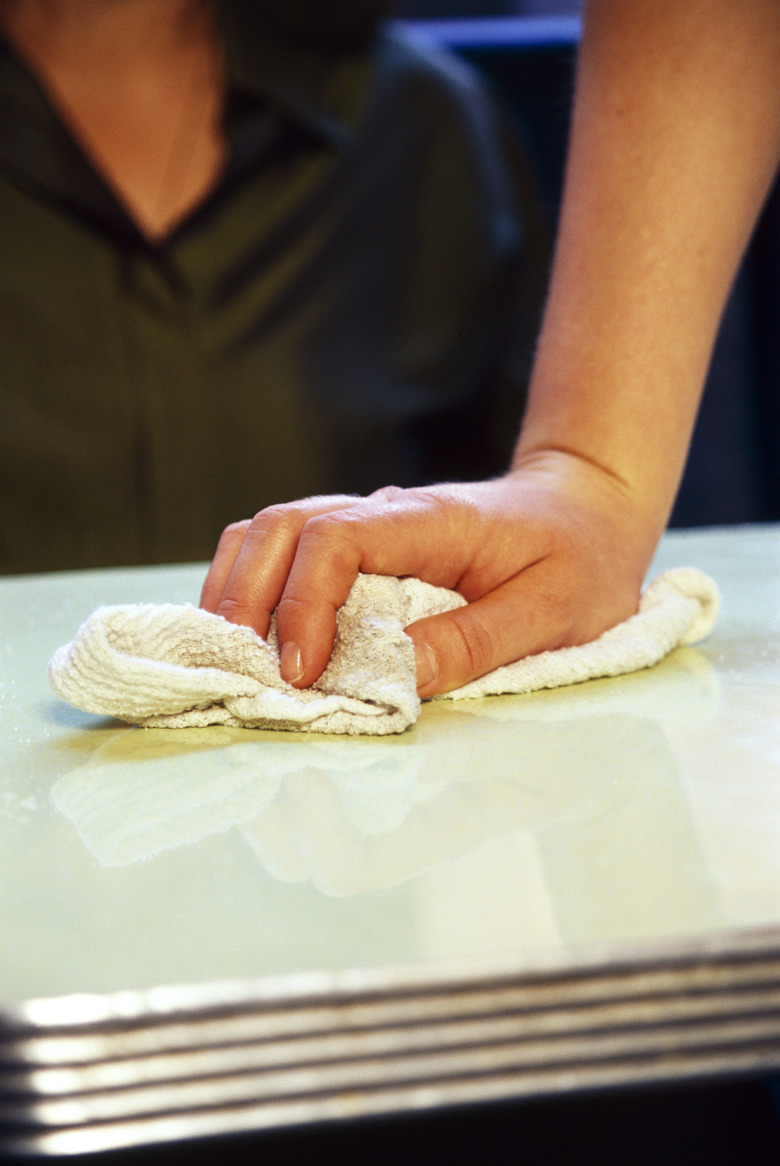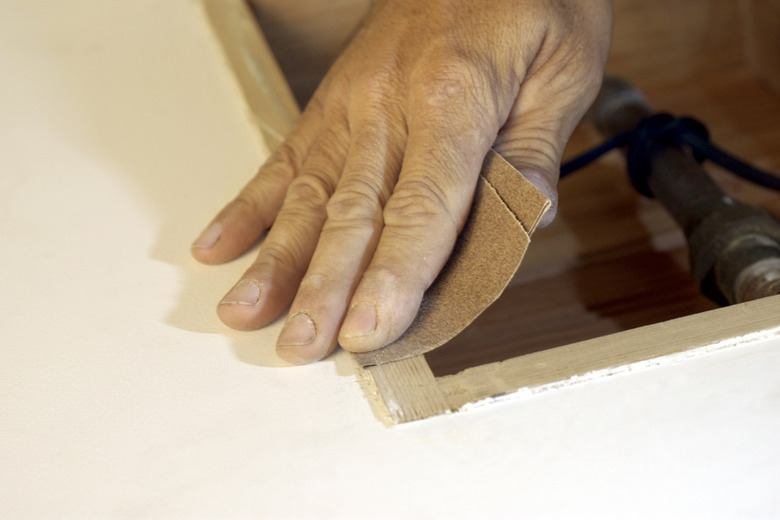How To Get Air Bubbles Out Of Polycrylic
Things Needed
-
Sandpaper
-
Clean dust-free rags
-
Tack cloth
Tip
Bubbles can be an issue created when loading the brush from the can and then clearing the excess paint off the brush by drawing the brush across the can edge. Decant the Polycrylic to and work from a paper painters bucket, or load the brush carefully.
The source of air bubbles in Polycrylic finish may be dust or some other foreign matter on the surface and/or overworking the application process. Any bubbles that exist a minute or two after application will need to be cleared away before the Polycrylic dries. You can sand away bubbles that are present in a dried finish and a subsequent top coat applied. It is best to apply the material in such a way that very few or no bubbles are introduced.
Step 1
Resolve the bubble problem while the finish is still wet. If the bubbles are present due to overworking the Polycrylic application, they should start disappearing within a minute or two, banging the object sharply will help to speed the bubble removal process along. If after two minutes the bubbles are still present, the problem is probably caused by dust or some substance present that is polluting the surface. Clear away the problem finish before it has a chance to dry. Wipe off the finish with a clean dust free rag or paper towels and then wash the surface with mild soap and water. Let dry. Sand the surface lightly with 80 or 100-grit sandpaper and tack the dust off before reapplying the Polycrylic.
Step 2
Sand the bubbles away in a finish that has dried. Using 60 or 80-grit sandpaper remove the problem bubbles by carefully sanding with a floating sandpaper technique. Only the bubble areas will need to be sanded away if another coat of Polycrylic will be applied. Clean the sanded area with 120-grit sandpaper. Tack all dust away before reapplying the topcoat.
Step 3
Paint in a dry dust free environment with 60 to 80 degree Fahrenheit temperatures. Do not apply in direct sunlight. Do not apply on an object that is hot from sitting in the direct sunlight. Do not apply in a breeze or otherwise windy conditions. When applying with a brush, flood on the Polycrylic and brush out using a light touch following a consistent brushing direction. Do not overwork the application process. Sand the surface before applying and completely clean away all dust and particulate matter. Use a clean brush. Do not over stir when mixing the Polycrylic.



